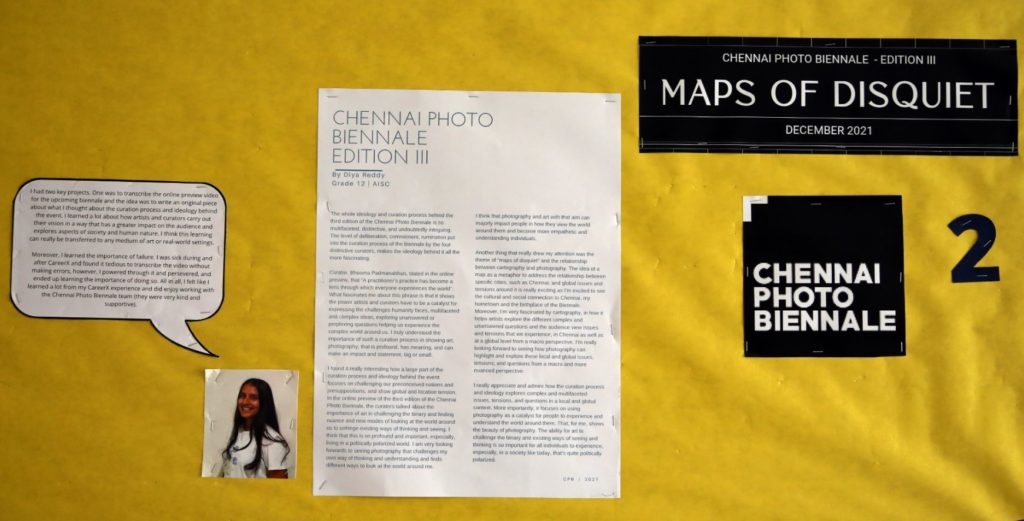
The whole ideology and curation process behind the third edition of the Chennai Photo Biennale is so multifaceted, distinctive, and undoubtedly intriguing. The level of deliberation, commitment, and rumination put into the curation process of the biennale by the four distinctive curators, makes the ideology behind it all the more fascinating.
Curator, Bhooma Padmanabhan, stated in the online preview, that “A practitioner’s practice has become a lens through which everyone experiences the world”. What fascinates me about this phrase is that it shows the power artists and curators have to be a catalyst for expressing the challenges humanity faces, multifaceted and complex ideas, exploring unanswered or perplexing questions helping us experience the complex world around us. I truly understood the importance of such a curation process in showing art, photography, that is profound, has meaning, and can make an impact and statement, big or small.
I found it really interesting how a large part of the curation process and ideology behind the event focuses on challenging our preconceived notions and presuppositions and shows global and location tension. In the online preview of the third edition of the Chennai Photo Biennale, the curators talked about the importance of art in challenging the binary and finding nuance and new modes of looking at the world around us to unhinge existing ways of thinking and seeing. I think that this is so profound and important, especially, living in a politically polarized world. I am very much looking forwards to seeing photography that challenges my own way of thinking and understanding and finds different ways to look at the world around me. I think that photography and art with that aim can majorly impact people in how they view the world around them and become more empathetic and understanding individuals.
Another thing that really drew my attention was the theme of “maps of disquiet” and the relationship between cartography and photography. The idea of a map as a metaphor to address the relationship between specific cities, such as Chennai, and global issues and tensions around it is really exciting as I’m excited to see the cultural and social connection to Chennai, my hometown and the birthplace of the Biennale. Moreover, I’m very fascinated by cartography, in how it helps artists explore the different complex and unanswered questions and the audience view issues and tensions that we experience, in Chennai as well as at a global level from a macro perspective. I’m really looking forward to seeing how photography can highlight and explore these local and global issues, tensions, and questions from a macro and more nuanced perspective.
I really appreciate and admire how the curation process and ideology explores complex and multifaceted issues, tensions, and questions in a local and global context. More importantly, it focuses on using photography as a catalyst for people to experience and understand the world around them. That, for me, shows the beauty of photography. The ability for art to challenge the binary and existing ways of seeing and thinking is so important for all individuals to experience, especially, in a society like today, that’s quite politically polarized.
– Diya Reddy, Grade 12, American International School
